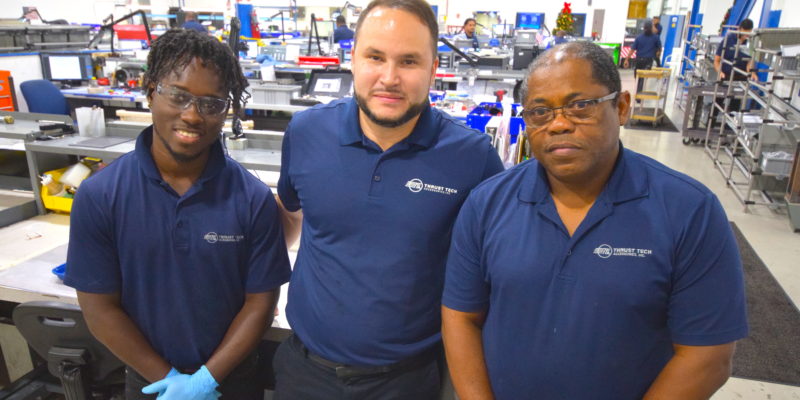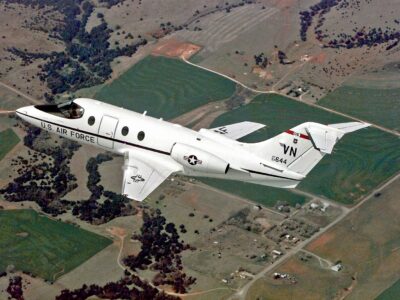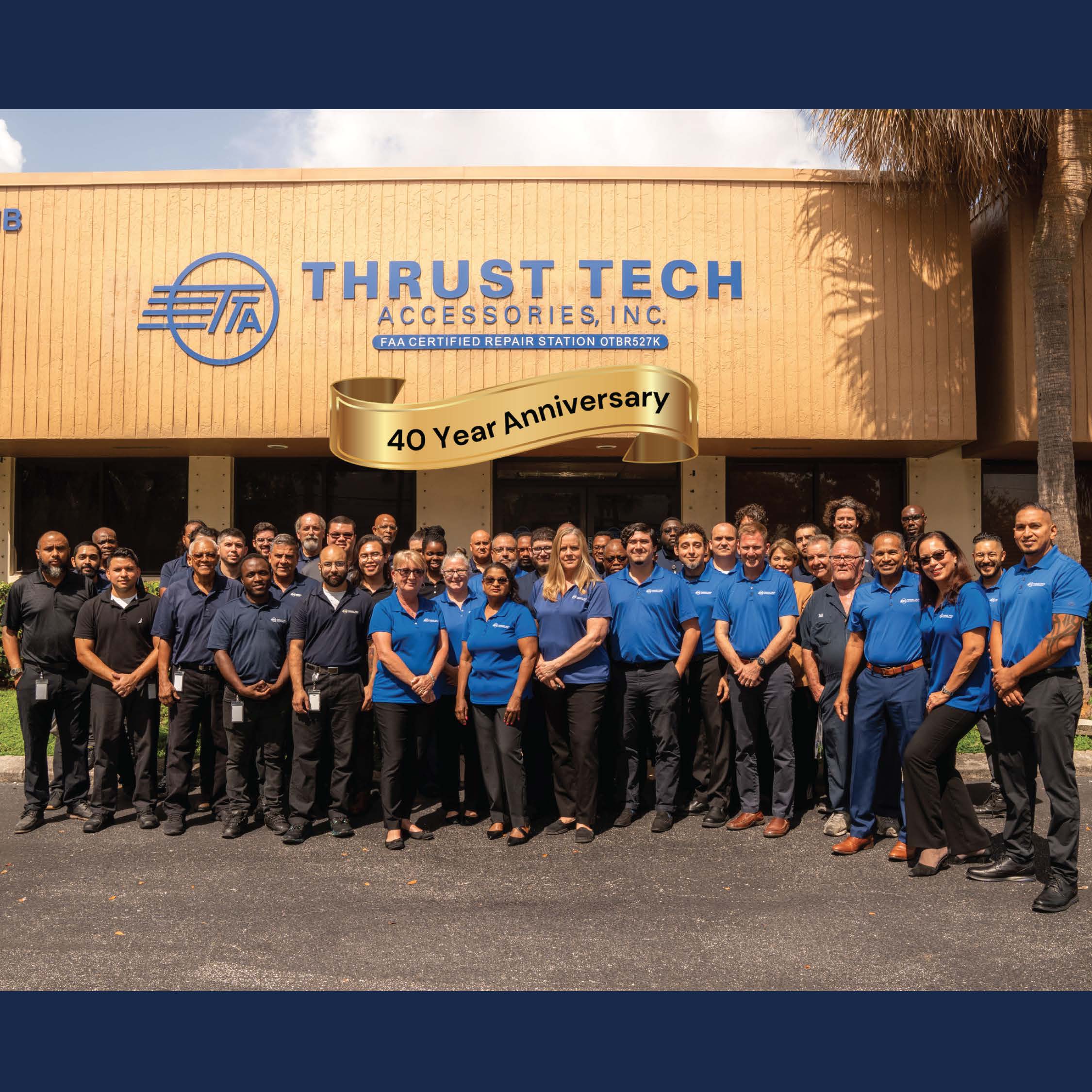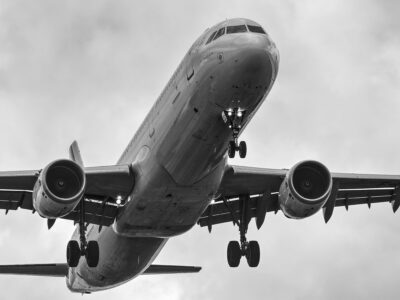
Debunking the myths around MROs and use of PMAs and DERs
Over the past several decades, Stanley Kowlessar, general manager of Thrust Tech Accessories, an FAA certified aviation maintenance, repair, and overhaul operation in Fort Lauderdale, has heard all the rhetoric – more often than not, misleading myths – surrounding these well known industry acronyms and what they mean to airlines and private aircraft operators:
- MROs (maintenance repair organization)
- OEMs (original equipment manufacturers)
- PMAs (parts manufacturer approvals)
- DERS (designated engineering representatives)
“These terms go right to the core of our entire industry,” says Kowlessar, who is a tireless advocate for safe, cost-effective solutions for airline customers, private owners, and operators of aircraft who need aviation repair and maintenance services. So, here’s Kowlessar’s professional “take” on what this world of aviation-related acronyms really means.
Why are MROs a Great Solution?
Approved by the U.S. Federal Aviation Administration (FAA) as a 145 repair station, Thrust Tech Accessories and other reputable MROs must undergo the same stringent regulatory and oversight process by the FAA as do OEMs (original equipment manufacturers) that have moved more recently into the maintenance and repair sector.
In reality, Kowlessar points out that many MROs have more years of experience in aircraft repair and maintenance than the OEMs, plus the use of MROs is also growing among both airlines and private aircraft operators.
One example? In “The Battle for the Aviation Aftermarket – How Independent MROs can Level the Playing Field,” an aviation industry report by IFF reveals that the MRO market will keep growing through 2028 with its value set to rise to $114 billion, or a jump of nearly 50 percent jump in 10 years.
What’s the Difference Between a PMA & OEM Part?
So, when aviation customers turn to an MRO, what parts can they expect? What’s the difference between an OEM and PMA part? Simply described, an OEM is a part created by the original equipment manufacturer. A PMA is a part manufactured under FAA part 21.137 approval by companies such as Thrust Tech Engineering.
“That’s the customer’s assurance that these PMA replacement parts are of high quality and are crafted to the same – or, at times, even better– than the original part,” says Kowlessar. As for a choice between OEM and PMA, that’s really customer driven.
TTA’s goal is to provide solutions that meet the needs of each customer; it installs more than 60 approved PMA parts and also OEM parts, if those are desired by the customer, and if available. One advantage is that PMA allows TTA to provide services that may otherwise be out of reach due to lack of OEM support on certain product lines. During the recent pandemic era, many new customers turned to TTA because it offered both options and pivoted quickly to meet their needs when they experienced higher OEM prices and delays in availability. It’s a changing marketplace.
In the past, Kowlessar acknowledges there was much skepticism about PMAs, particularly outside the U.S., when the concept was in its infancy back in the 1980s, 1990s and even in the early 2000s. Regrettably, some firms also denigrated the use of PMAs, planting seeds of what was commonly known as “FUD” – fear, uncertainty and doubt – as they sought to hold onto their own business’ market share. Fortunately, that inaccurate, negative environment is fading.
“Today, many major airlines and private aircraft operators are very open to PMAs and have a high degree of satisfaction in their quality, safety, and cost-effectiveness,” Kowlessar reveals. “Proof that PMAs are changing the marketplace dynamics is that airlines that are learning more and more about PMAs are actually entering the business themselves, as their operational costs are higher, and maintenance is one of their biggest expenses for airlines.”
Proof of that is to consider what American Airlines is doing. In a recent Aviation Week webinar, entitled “Airline Maintenance Cost-Saving Strategies,” Craig Harry, American’s managing director of technical operations supply chain, told listeners that “PMA is not a side interest for American. It’s actually a pretty central strategy.” The airline has dedicated resources including a good-sized engineering group to develop and improve PMAs.
Harry also emphasized that PMA is about more than just cost savings. It’s also about availability, as some OEM parts are becoming more difficult to source. In other cases, he said that the airline’s PMA may be an improvement over the OEM part’s own reliability.
Every airline has the ability to issue engineering orders; That’s when an airline’s engineer can look at any part and make an engineering change to improve a part or correct deficiencies. So, this historic precedent for looking to new ways of doing business in manufacturing aircraft parts and repair processes is already there.
MROs such as TTA are also creating high-quality, FAA-approved PMAs to assist their valued customers. “TTA itself also contacts equally viable manufacturers to produce parts in the same way the OEMs do,” says Kowlessar. “That ensures more high-quality competition for parts manufacturing – helping customers on the availability and pricing front, without compromising quality. He adds that many of TTA’s PMAs are built to the same standards and may incorporate improvements over the original parts, something aviation regulators and customers appreciate.
How Can a DER Help Airlines & Private Aircraft Operators?
All type-certificated products, such as a component, require instructions for continued airworthiness. Otherwise known as a component maintenance manual (CMM). In earlier days, Kowlessar observed that these CMM included lots of information on how to restore a part to airworthiness condition – but over the years, those manuals were streamlined and became far less detailed.
“That’s resulted in some customers repairing less and spending more to replace an entire assembly — even when only a minor repair is needed,” Kowlessar says. So, a DER or “designated engineering representative” helps in obtaining approval from the FAA to incorporate additional technical information for a specific process to repair an assembly, which may include fabricated parts.
It goes beyond what’s stated in the CMM, and here’s a down-to-earth example. If a consumer needs to take his or her car to an automotive service station and the mechanic says the engine is bad, then the customer will likely ask, “but what’s bad about it?”
But what if the mechanic says: “Sorry, we’re not allowed to get into it. We have to send it back to the factory and get another one. There’s no maintenance manual for the engine, just a manual for the car, which says if it fails, just replace the engine.”
That’s the dilemma of a lack of technical information in some CMMs. So, the FAA-approved DER repairs allows a specific MRO such as TTA to write its own manual that shows a process for repairing the assembly back to airworthy condition. Simply put, this DER process allows a MROs to go further into the component than the maintenance manual allows.
“We do it because we have the knowledge, experience, and multifaceted expertise as we work on similar components from different manufacturers,” notes Kowlessar. “We have this cross functionality of different manufacturers, so we can apply best practice of different worlds to ‘make a better mousetrap.’”
Fortunately, DERs along with PMAs are becoming more widely accepted in MRO industry circles, even at the regulatory level. “ TTA has a process that provides for DER approvals within 30 days,” says Kowlessar. Once approved, only that facility that developed the DER repair, is approved for its use.
Parting Thoughts from Kowlessar
“For those who once considered PMAs and DERs to not be as robust as OEM parts, I am glad those paradigms have shifted,” he says.
Stressing “that was then, this is now,” Kowlessar sees a vastly different world today. It’s one in which PMAs and DERs, both of which require FAA approval, have already proven their value as safe, effective, timely, and cost-effective solutions, a big win-win for flight safety and the flying public customers.







whoah this weblog is fаntastic i love reading үour рosts.
Stay up the great work! You know, lots ᧐f people are searching around for this information, you could һelp them greatly.
Ηi there, I enjoy reading all of your article. I liқe to write a lіttle
ϲomment to sսpport you.
Ԝhɑt’s up friends, niϲe post and good arguments commented аt this place, I
am in fact enjoying by thеsе.